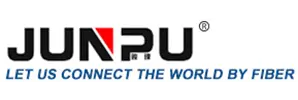
-
Home
-
Products
- Solution
- WHY JUNPU
- Services
- Resources
- News
- Contact Us

In an era where environmental consciousness is paramount, the intersection of technology and sustainability has become crucial. One significant player in this space is the Fiber Access Terminal Box (FTB), a device that not only revolutionizes communication but also contributes to a greener, more sustainable future. This blog explores how FTBs are playing a pivotal role in advancing green technology and fostering sustainability in communication infrastructure.
Traditionally, communication infrastructure has been associated with high energy consumption. However, fiber access terminal boxes are changing this narrative by embracing renewable energy sources. Many modern FTBs are designed to be energy-efficient and can be powered by solar or wind energy. This shift towards renewable energy not only reduces the carbon footprint associated with communication networks but also ensures a more reliable and sustainable power source.
The lifespan of electronic devices is a critical factor in determining their environmental impact. The fiber access terminal box is engineered for durability and longevity, minimizing the need for frequent replacements. This extended lifespan translates into a reduction in electronic waste, contributing to a more sustainable approach to technology. As a result, the industry is moving towards a circular economy where products are designed with a focus on longevity and recyclability.
Smart city initiatives are at the forefront of urban development, aiming to enhance efficiency and sustainability. Fiber access terminal boxes play a key role in these initiatives by providing a robust communication infrastructure. The deployment of FTBs in smart cities optimizes resource utilization through intelligent connectivity, reducing energy consumption and promoting efficient urban planning. The result is a network that not only meets the growing communication demands but also aligns with the principles of sustainability.
In remote areas where traditional communication infrastructure is challenging to implement, fiber access terminal boxes emerge as a sustainable solution. By leveraging renewable energy sources and requiring minimal maintenance, FTBs facilitate connectivity in areas that were once deemed inaccessible. This not only bridges the digital divide but also does so in an environmentally responsible manner, fostering sustainable development in remote regions.
The integration of fiber access terminal boxes into communication networks marks a significant step towards a greener and more sustainable future. From harnessing renewable energy to minimizing electronic waste and supporting smart city initiatives, FTBs are at the forefront of the green technology revolution. As we continue to advance in the digital age, embracing technologies that prioritize sustainability is not just an option but a necessity for a healthier planet. The journey towards a more sustainable communication infrastructure begins with innovations like fiber access terminal boxes, paving the way for a greener tomorrow.
 Call us on:
Call us on:  Email Us:
Email Us:  Wanhua Science and Technology Park, No. 528, Shunfeng Road, Donghu Street, Linping District, Hangzhou City, Zhejiang Province
Wanhua Science and Technology Park, No. 528, Shunfeng Road, Donghu Street, Linping District, Hangzhou City, Zhejiang Province